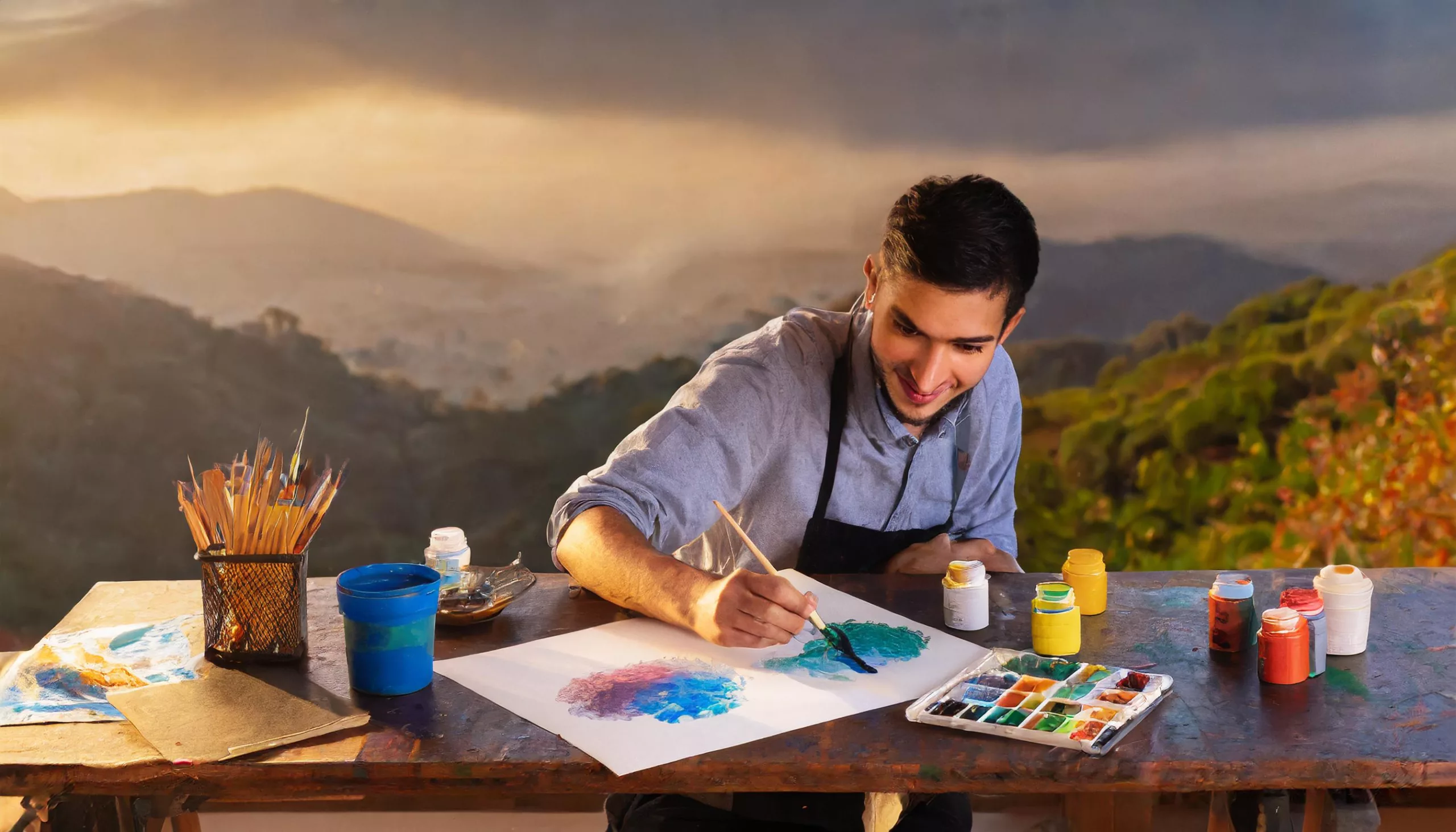I’m going to show you how to kick off your painting journey effectively. First, let’s talk about materials. Choosing the right paints, brushes, and surfaces isn’t trivial. Acrylics are forgiving for beginners, while watercolors offer a delicate transparency. Oils? They’re rich and vibrant, but they do take their time to dry. Your brushes are your instruments, from the broad strokes of a flat brush to the finer points of a liner. And surfaces? Canvases are classic, but paper and wood have their own allure.
Set up a space where creativity meets focus. Good lighting is key, and if you can, station yourself near a window. No distractions, please! Imagine the space filled with potential, your future artworks just waiting to emerge.
Color theory is a treasure map for painters. It guides you to mix colors that sing together or contrast for drama. Explore basic concepts like primary, secondary, and complementary colors. Sometimes, a little white added to red doesn’t just make pink—it unlocks a new dimension of warmth.
You will learn to appreciate the sketch. It’s your blueprint, the faint lines that map out your vision. Sometimes, all it takes is a few pencil strokes to save hours of guesswork later.
Primer isn’t just for walls. It’s what turns a good painting into a masterpiece. An underpainting serves as a shadow puppet theater—later layers reveal the show, but it’s that first shadowy outline that sets the stage.
Now you’ve got the basics under your belt, we’ll head into the real fun—techniques that’ll make your canvas sing. In the following section, I’m here to help you with mastering the core techniques every artist should know.
Mastering the Basics: Core Techniques for Every Artist
In my opinion, once you’ve set up your workspace and gotten a feel for your materials, it’s time to get your hands dirty – or, should I say, painty. Let’s talk brushwork. This isn’t just about making random strokes on the canvas; it’s about expressing texture and form. You can try out different brushes to see what effects they produce, from a wide, flat brush for bold, sweeping strokes to a round, pointed brush for detailed work.
Now, what about blending? If you want colors in your painting to look like they’re naturally merging into each other, blending is your go-to. You’ll learn how to softly transition between shades without creating a muddled mess. It’s a technique that adds incredible realism and subtlety to your work.
What about adding texture? Enter sgraffito and impasto. Sgraffito means scratching into the wet paint to reveal layers underneath, while impasto is about applying paint thickly so it stands out from the surface. Both can add a striking dimension to your painting.
Then there’s the technique of dry brushing. This is when you use a brush that’s relatively free of paint to apply a light whisper of color. On the other hand, washing involves applying a thin, transparent layer to create varying degrees of hue and light. Glazing over a dry layer can really make your painting pop with luminosity and give it that professional-looking depth and shine.
Mix and match these techniques to find out what resonates with you. Remember, your first attempt doesn’t need to be your last, and you can always adjust your approach down the road. Choose something that stands out to you, and practice it until it feels right.
From Vision to Reality: Finishing Your Painting with Flair
I’m going to let you in on something: the final touches of a painting can make a world of difference. Adding those detailed strokes, whether it’s the twinkle in an eye or the delicate veins on a leaf, can bring your work from good to great. But remember, detailing with precision doesn’t mean you have to capture every single aspect; choose something that resonates with you and emphasizes that.
You’re also going to find out about the importance of stepping back from your work. It’s easy to get lost in the minutiae, but taking a moment to look at your painting from a distance can give you incredible insights. It’s about balancing your composition and ensuring that all elements are harmoniously interacting.
Don’t worry too much about the finishing steps, like applying varnish. It may seem daunting, but this is how you’re going to protect your artwork over time. A well-applied varnish can enhance colors and ensure that your painting withstands the test of time.
And here’s the kicker: embracing imperfections is the key to developing as an artist. Your first attempt doesn’t need to be your last. Each stroke is a lesson in itself, and you can always adjust your approach down the road.
So, what’s next for you as a beginning artist? There’s a lot of opportunity in continuing to experiment and push your boundaries. Stay curious and seek out more education – whether that be through workshops, online tutorials, or more practice. Your unique style will emerge as you refine your techniques and your eye for detail.

